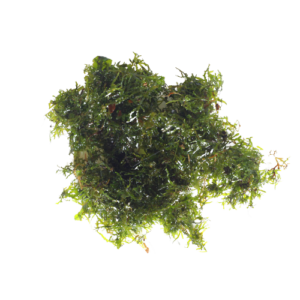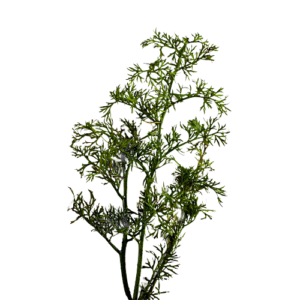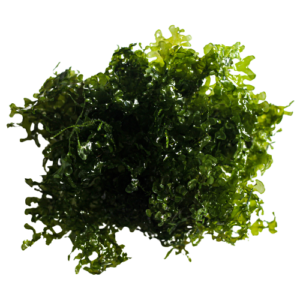Pinoy Blue Zebra Angelfish: Fish Species Profile
The Pinoy Blue Zebra Angelfish is a stunning and vibrant variant of the angelfish species, known for its striking blue and black striped pattern, which gives it a zebra-like appearance. This freshwater fish is popular in the aquarium hobby for its unique coloration, peaceful temperament, and relatively easy care. It is a special type of angelfish that was selectively bred in the Philippines, making it a sought-after variety among aquarists.
- Common Names: Pinoy Blue Zebra Angelfish, Blue Zebra Angelfish
- Scientific Name: Pterophyllum scalare
- Adult Size: Typically 4 to 6 inches (10 to 15 cm) in length
- Life Expectancy: 5 to 10 years in a well-maintained tank
Characteristics
The Pinoy Blue Zebra Angelfish features a mesmerizing blue body with black vertical stripes, resembling a zebra pattern. This beautiful coloration makes it a standout in any aquarium. It has the characteristic angelfish shape, with a laterally compressed body and long, flowing fins. Known for its peaceful and calm nature, this angelfish makes a wonderful addition to community tanks.
- Family: Cichlidae
- Origin: Bred in the Philippines, though wild angelfish are native to the Amazon River Basin in South America
- Social Behavior: Generally peaceful but may show territorial behavior during breeding
- Tank Level: Mid-level swimmers, often seen gliding through the tank’s middle section
- Minimum Tank Size: 20 gallons (76 liters) for a small group
- Diet: Omnivorous, including flake foods, live foods, and vegetables
- Breeding: Egg layers, typically laying eggs on vertical surfaces
- Care Level: Easy to moderate; suitable for both beginner and intermediate aquarists
- Water Conditions:
- pH: 6.5 to 7.5
- Temperature: 76°F to 82°F (24°C to 28°C)
- Hardness: 5 to 15 dGH
Origin and Distribution
The Pinoy Blue Zebra Angelfish is selectively bred in the Philippines for its distinctive coloration. While wild angelfish are native to the Amazon River Basin, the Pinoy Blue Zebra variety was developed through careful breeding practices to emphasize the striking blue and black pattern, which makes it so unique in the aquarium trade.
Colors and Markings
The defining feature of the Pinoy Blue Zebra Angelfish is its dazzling blue body, contrasted with bold black vertical stripes, giving it a zebra-like appearance. The fins are also elongated and graceful, often displaying hints of iridescent blue. These angelfish are among the most colorful of the angelfish varieties, with the males often displaying more vibrant coloration than females.
Tankmates
Pinoy Blue Zebra Angelfish are peaceful but can be territorial, especially during breeding times. They do well in a community tank with other peaceful species, but care should be taken when choosing tankmates. They may become aggressive toward smaller or slower fish, especially if there is competition for space or resources.
- Recommended Tankmates:
- Other peaceful cichlids
- Tetras (e.g., neon tetras, cardinal tetras)
- Corydoras catfish
- Gouramis
- Platies, mollies, swordtails
- Rasboras
- Fish to Avoid:
- Aggressive or larger species (e.g., larger cichlids, barbs)
- Small fish that may be bullied or seen as food (e.g., shrimp or small schooling fish)
Habitat and Care
The Pinoy Blue Zebra Angelfish requires a well-maintained tank with stable water parameters. They prefer a moderately planted tank with open swimming space. Providing a gentle filtration system and stable water conditions is key to their health. Since they are originally from slow-moving waters, they appreciate calm currents and warm, soft water.
- Ideal Aquarium Conditions:
- Subdued lighting and floating plants to provide shade
- Plenty of hiding spots and vertical surfaces for laying eggs
- Regular water changes to maintain water quality
- A mature tank with established filtration
Diet and Feeding
Pinoy Blue Zebra Angelfish are omnivores and should be fed a balanced diet to ensure they remain healthy. They can eat high-quality flake food, supplemented with live or frozen foods such as brine shrimp, daphnia, and bloodworms. Occasional vegetable matter like spinach or algae wafers is also beneficial.
- Feeding Tips:
- Feed small amounts 2-3 times a day
- Remove uneaten food promptly to avoid water quality issues
- Supplement with live or frozen food to encourage vibrant coloring and health
Gender Differences
Male and female Pinoy Blue Zebra Angelfish can be difficult to tell apart unless they are breeding. However, in general, males tend to have a more slender body, while females are rounder, especially when gravid (carrying eggs). Males may also show more intense coloration during breeding periods.
- Male: Slender body, brighter blue coloration
- Female: Rounder body, less intense coloration
Breeding
Breeding Pinoy Blue Zebra Angelfish is possible in a well-maintained aquarium, though they require specific conditions. They are egg layers and prefer to lay their eggs on vertical surfaces like plant leaves, rocks, or tank glass. After the eggs hatch, the fry need to be cared for in a separate tank to ensure they have a higher chance of survival.
- Breeding Tips:
- Maintain a pair of Angelfish for better chances of successful breeding
- Ensure the breeding tank has clean, stable water conditions
- Provide hiding spots for the female to feel secure
- Use a separate tank for the fry once they are free-swimming to protect them from adults
More Pet Fish Species and Further Research
If you’re interested in other angelfish varieties or similar peaceful cichlids, explore other species like the common angelfish, discus fish, or the elegant marble angelfish. Researching different types of cichlids can help you build a diverse and harmonious community tank.
FAQ
Q: How many Pinoy Blue Zebra Angelfish should I keep together?
A: It’s best to keep a pair or a small group of 4-6 angelfish in a well-sized tank. This will ensure they have enough space and reduce aggression, especially during breeding.
Q: Are Pinoy Blue Zebra Angelfish hard to care for?
A: No, they are relatively easy to care for as long as their water conditions are stable, and they are fed a balanced diet. They are suitable for aquarists with some experience.
Q: How can I tell if my Pinoy Blue Zebra Angelfish is male or female?
A: Males tend to have a more slender body and brighter coloration, while females are rounder, especially when they are carrying eggs.






















Reviews
There are no reviews yet.